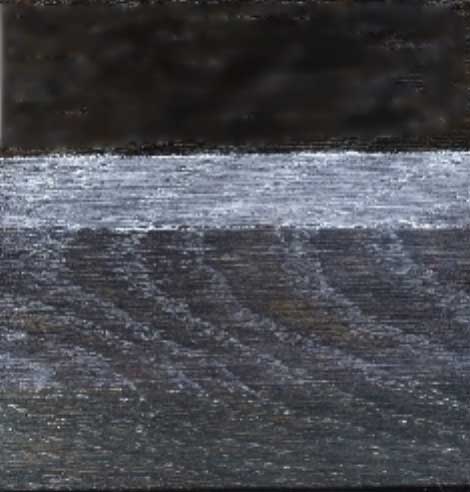Staining Oak Black with a White Grain
Called a "ceruse" or "pickled" finish, this look uses a black stain base, sealer, and a white glaze. March 1, 2006
Question
I am looking for directions to reproduce a finish on oak that I have seen on art deco furniture, The pieces have a solid black stain but have a white grain. Can anyone help me with this?
Forum Responses
(Finishing Forum)
From contributor M:
If this is what you are looking for below, then it’s a Black background with white color in the wood’s pores.
Here, is one way how you can do it.
1. Use either a black coating, or a black stain, and allow for drying.
2. Apply a few seal coats to seal in the black colorant, and to also act as barrier, so you don't change the black color.
3. Apply a white glaze, and then brush it out evenly, you may want to use a synthetic nylon pad to remove some excess colorant.
4. Apply your clear coats to complete the finish.
Remember your start to finish samples.

Click here for full size image
From contributor B:
This is typically called a ceruse finish. Scrub the grain with a wire brush before sanding. Then use a black stain, washcoat, white glaze or filler. If you use a washcoat rather than a full seal coat you will probably get more glaze to stick in the grain.
From contributor R:
Here is how I do it.
1. Black NGR (just to build up color, you could skip this).
2. Vinyl sealer tinted black.
3. Dry white glaze and scuff off.
4. Sealer.
5. Top coat.
From contributor C:
From the image above it looks as if it comes out looking something like wenge. Is this accurate?
From contributor M:
Wenge (Africa) is dark brown to black with gray veins in the wood. The wenge wood is naturally colored, whereas, these samples were both done with colorants on opened grained woods. We use to call it a "pickled finish". The image above shows a black background color, with a white colorant inside the pores. At one time, this finish was done in a multitude of other color combinations; it was considered a highly decorative finish.
